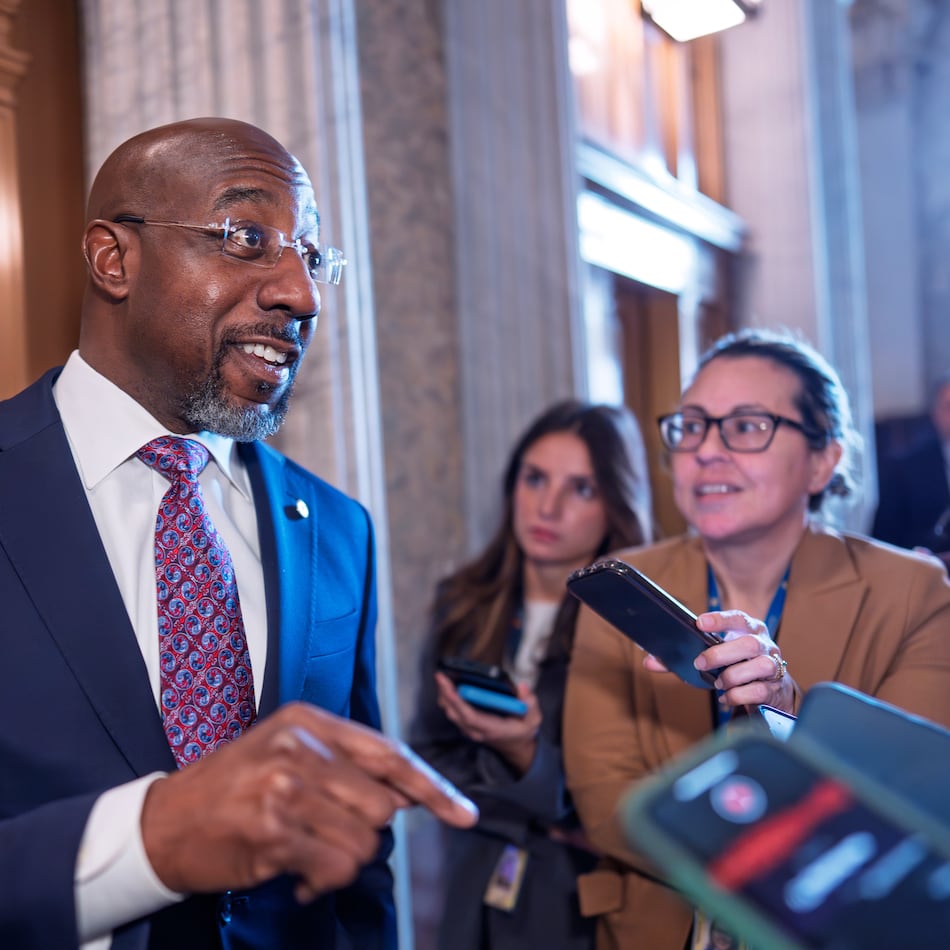Before moving from Atlanta’s Pittsburgh neighborhood to Westview, Takia Lamb did her research. She spent time chatting with residents about the benefits of living in the neighborhood. Neighbors told her Westview was nice, quiet and close-knit.
The one thing that never came up in conversation was its proximity to the Atlanta Beltline, the 22-mile loop around the city that aspires to revitalize neighborhoods, improve transit and connect communities.
Lamb discovered the Beltline by accident when she was driving home. “I feel like it is literally just for walking or bike riding, and since I am not into either of those things, I don’t really go there,” said Lamb. She’s not the only one.
The Westside Trail stretches 3 miles from Washington Park and Lena Street on the north to Adair Park and University Avenue on the south. It connects several historically black neighborhoods in Southwest Atlanta, including Westview, West End and Adair Park.
It overlaps the West End Trail, the first portion of the Atlanta Beltline constructed between 2008 and 2010. Since the completed 3-mile Westside Trail opened in October, trail counters at Donnelly and White streets have tracked a total of about 128,000 users, according to data obtained from the city of Atlanta.
Compare that to the Eastside Trail, a 3-mile stretch of the Beltline that runs from the top of Piedmont Park to Reynoldstown, which tracked more than 845,000 users at counters on Ponce de Leon Avenue and Wylie Street during a similar time period.
On the Eastside Trail, which touches the gentrified neighborhood of Old Fourth Ward, massive development in the form of expensive high-rise apartments, retail, restaurants and Ponce City Market, the mixed-use property that opened in 2014, made it a metrowide destination and increased the already dense population in the area.
Plans are underway for more development along the Westside Trail that will make it a destination as well, said Beltline officials, but the story of the Eastside Trail has become a cautionary tale.
A tool for urban renewal — or for gentrification?
While the Beltline has been embraced and enjoyed by many residents, critics say it has not delivered on promises of affordable housing and transit, leaving the impression — real or imagined — that the Atlanta Beltline was not created with everyone in mind.
Atlanta Mayor Keisha Lance Bottoms recently acknowledged those concerns. “There is this assumption that everybody knows what (the Beltline) is and everybody appreciates it’s for them too, but they don’t know,” said Bottoms in Atlanta Magazine, pointing to the need for education, particularly in African-American communities. Bottoms did not respond to the AJC’s repeated requests for comment over the past few weeks.
The Atlanta Beltline Inc. (ABI), the entity charged with managing the implementation of the Atlanta Beltline, has begun tackling its image problems with two new hires: one to oversee branding and communications and the other to manage equity and inclusion. On Saturday, the Atlanta Beltline Partnership opened the Atlanta Beltline Center along the Eastside Trail with the mission of educating the public about the history, status and impact of the Atlanta Beltline.
On any given day, the Eastside Trail of the Atlanta Beltline hosts hundreds of bike riders, walkers, tourists, families, community events, fitness buffs and more. It has become so congested that users have started to complain.
Old Fourth Ward, the surrounding neighborhood, is more racially and economically diverse than at any time in recent history. The white population of the area grew from about 4 percent in 1990 to about 55 percent white today, according to census data analyzed in a report by the Housing Justice League, an advocacy organization. The same report showed that median income has doubled since 1990. As of March, the median home value in Old Fourth Ward was $268,644, according to real estate website Zillow, and home values have increased 15.2 percent over the past year. To some, it was urban renewal at its best. For others, the Beltline had become a tool for gentrification.
Melody L. Hoffman, author of “Bike Lanes Are White Lanes,” recently visited the Atlanta Beltline during a trip to the city. Hoffman, who has studied urban biking in cities like Milwaukee, Portland and Minneapolis, said she had already witnessed the same dynamics play out in similar projects across the country.
“Cities have realized there is a certain class of people they are trying to bring in,” Hoffman said. The desired demographic is often mostly white, upwardly mobile, working in creative fields with disposable income even if they aren’t the highest users of a certain commodity, she said.
For example, one of the largest groups of bike commuters — Latino men with salaries under $25,000 — have been noticeably absent from conversations about the Beltline. “Why aren’t they talking to Latino workers and asking them where they want their bike infrastructure? That would make the most sense,” Hoffman said.
Ryan Gravel, the visionary behind the Atlanta Beltline, drew attention to growing concerns of equity and inclusion in 2016 when he resigned from the board of the Atlanta Beltline Partnership, citing the lack of commitment to affordable housing. An AJC investigation in July 2017 revealed exactly how the Beltline had broken its promises. Following the investigation, Paul Morris, then president and CEO of ABI, stepped down. He was replaced by Brian McGowan.
A cautious eye toward the future
In April, ABI announced hires for two newly created positions. Twanna Harris, vice president of brand, content and strategic initiatives, is charged with making sure the brand and the messaging of the Atlanta Beltline reflect its vision. Nonet Sykes, chief equity and inclusion officer, will focus on strategic planning for equity and inclusion.
“It is really important to address the fact that under our new leadership, we have completely changed our vision on how we view the Beltline and how it impacts our communities,” Harris said.
Since 2009, ABI has primarily engaged residents through community meetings, monthly study groups and CEO coffees, said Beth McMillan, director of planning and community engagement. ABI recently launched its first-ever online survey asking locals for input on the Beltline.
McMillan said feedback from community meetings or other sources is taken into consideration and in some cases, has been sent back to consultants to incorporate into development plans.
Westside residents have been supportive of the development that has come to the community, including the two most visible businesses along the trail, Lean Draft House and Monday Night Brewing's Garage. "What they saw was the opportunity to light the fuse. For so long, there had been absolutely nothing in terms of commercial development along the area that is now the Westside Trail," said Jenny Odom, spokesperson for ABI.
But some Westside residents are concerned about how that development will progress.
“We want the trail to represent and reflect the communities that it comes through,” said Jason Hudgins, president of the Westview Community Organization. “There are people moving in who have seen what has happened on the Eastside Trail that don’t want to engage the community as it is but who want to make it in their own image.”
Hudgins, who moved from the Eastside to Westview two years ago, acknowledges that he is a product of gentrification, but he also wanted to live in an area where he could put down roots. Along with his counterparts in Ashview Heights and West End, Hudgins is determined that legacy residents will not be swept aside by Beltline development.
“On the Westside, we are very sensitive because the Westside has a storied history,” he said. “When I look on the Eastside Trail with high-rises, they are cute, but will they be there? Or will it be another Buckhead Village that we will tear down in 20 years?”
Businesses like the WeCycle bike shop on White Street and Afrikan Djeli Cultural Institute on Lee Street have a strong base in the community. As more development flows along the Westside Trail, Hoffman predicted one of two outcomes. “I can tell the culture is still there. So either I come back in five years and all that stuff is the same or I come back in five years and all that stuff is gone,” she said.
Lamb is hoping for the former. She moved to Westview because of the neighborhood character, not the Beltline, and if it changes too much, she isn’t sure she will stay.
“I would love to stay here if the community could be more diverse in every way,” she said. “But if it gets to the point where it doesn’t resemble anything like what it looks like now, then I wouldn’t stay. I might as well move to the suburbs.”
About the Author
Keep Reading
The Latest
Featured



